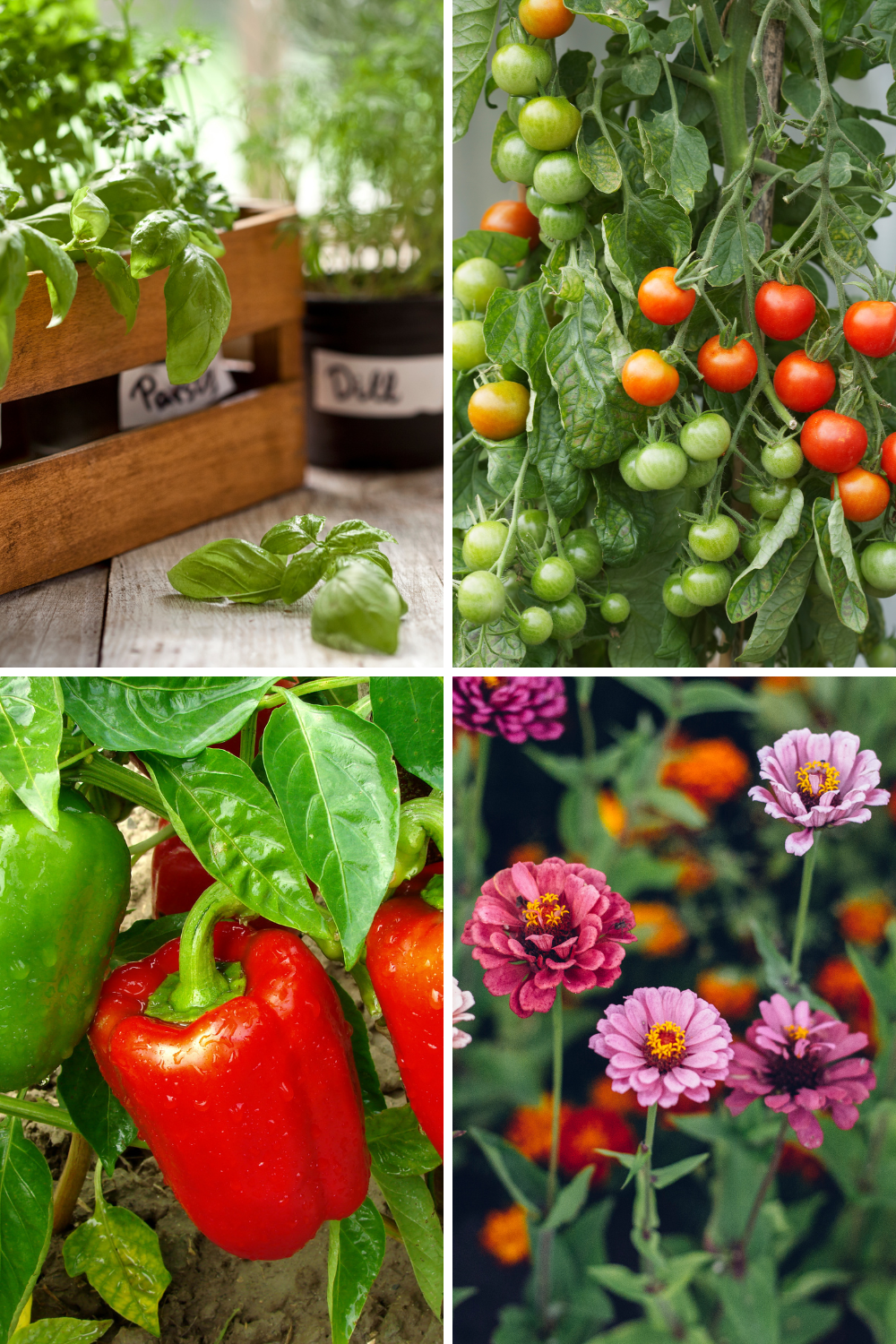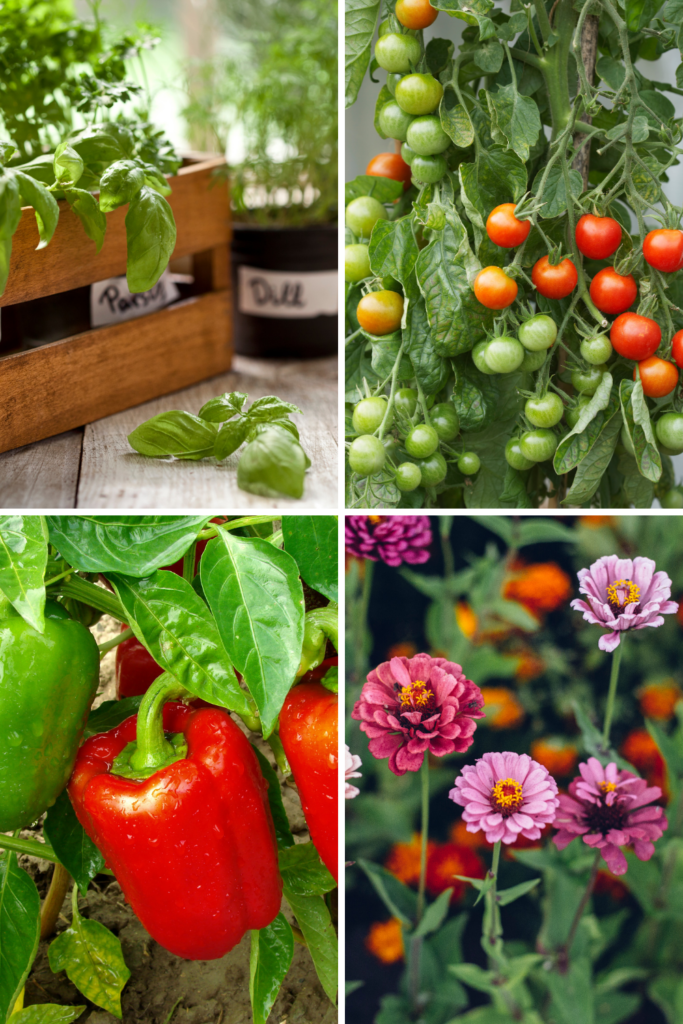As the cold winter days start to fade and the first signs of Spring begin to appear, many gardeners across Canada can begin to start preparing for the growing season ahead. One of the most exciting and rewarding activities to kick off the gardening year is starting seeds indoors. By starting seeds indoors, you give your plants a head start, ensuring strong, healthy seedlings will be ready to transplant in your garden once the weather warms up.
Whether you’re a seasoned gardener or a newbie eager to get your hands dirty, starting seeds in March is a fantastic way to jumpstart your gardening season. Here’s is an easy-to-follow guide to help you choose the best plants to start indoors, tips on getting your seedlings off to a great start, and some advice on timing your planting for a successful season.
Why Start Seeds Indoors?
Starting seeds indoors offers several advantages for Canadian gardeners:
- Longer Growing Season: Many plants have long growing seasons that can’t be fully supported by the short summer in Canada. By starting them indoors in March, you give them the extra time they need to mature before the last frost.
- Better Control: Indoors, you can control the temperature, light, and moisture levels, which gives your seeds the best chance to grow and thrive.
- Stronger Plants: Seedlings started indoors are often stronger and healthier when it’s time to move them outdoors. This is especially important in areas with unpredictable weather or short growing seasons.
Starting seeds in March also helps get you through those long, dreary months by giving you something to care for and look forward to until Summer arrives. Plus, the smell of fresh soil and the sight of tiny green shoots can be a huge morale boost as winter drags on.
What to Plant Indoors in March
March is an ideal time to start seeds for plants that need a long growing season to thrive in cooler climates. These include many vegetables, herbs, and flowers that can be transplanted outdoors after the danger of frost has passed. Keep in mind that planting times can vary based on your specific region and the anticipated last frost date in your area. Here are some of the best crops to start indoors in March for Canadian gardens:
1. Tomatoes
Tomatoes are a classic choice for indoor seed starting. They typically need a 6-to-8-week head start before being transplanted outside, so March is the perfect time to get them started. I like to choose heirloom, cherry, and beefsteak varieties, but be sure to give them plenty of light (or supplemental grow lights) and warmth to ensure they germinate and grow strong.
Tip: Tomatoes love the sun, so place them in a bright spot, ideally by a south-facing window. If you’re starting several varieties, make sure to label them and consider using seed trays to keep them organized.
2. Peppers
Like tomatoes, peppers also need a long growing season. By starting them in March, you can ensure they have plenty of time to mature before transplanting them outside after the last frost. Both sweet peppers (like bell peppers) and hot peppers can be started indoors.
Tip: Peppers are heat-loving plants, so they’ll thrive in warmer indoor temperatures. Keep them in a room that’s consistently warm and provide them with plenty of light. Using a heat mat can help maintain necessary soil temperatures for germination.
3. Herbs
March is a great time to start herbs indoors. My favourites include basil, parsley, and cilantro. These herbs do well when started inside, and they’ll be ready to move outdoors once the weather warms up. Starting herbs early means you’ll have a fresh supply for cooking all summer long.
Tip: Herbs can be easily grown in small pots or containers, making them perfect for indoor gardening. Make sure they get enough sunlight to prevent them from becoming leggy.
4. Cabbage and Broccoli
Cabbage and broccoli are cool-weather crops that can be started indoors in March for transplanting in late spring. These crops can tolerate cooler temperatures, so you’ll want to plant them early to give them the longest growing period possible before the hot summer months.
Tip: Make sure to harden off your seedlings properly before planting them outdoors to acclimatize them to the outdoor environment.
5. Cauliflower
Like cabbage and broccoli, cauliflower benefits from an early start indoors. March is an ideal time to sow cauliflower seeds, as they need a long growing season and should be transplanted once the weather is consistently warm. Cauliflower can be a bit finicky, but with the right care, it’s worth the effort.
6. Flowers for Pollinators
Many beautiful flowers that attract bees and butterflies can be started indoors in March. Consider planting varieties like sunflowers, marigolds, zinnias, and nasturtiums. These bright blooms will not only add color to your garden but also support pollinators essential for your vegetable garden.
Tip: Plant flowers in trays to easily move them outdoors later in the season. Also, pot up plants as they grow.
Tips for Successful Indoor Seed Starting
Use the Right Containers: Choose seed trays, pots, or repurposed containers with good drainage – this will help prevent waterlogging and root rot. If you are up for it, give soil blocking a try to grow stronger rooted plants.
Provide Adequate Light: While a sunny windowsill might seem like the perfect spot for your seedlings, you may need additional light in the form of grow lights to ensure they receive enough light for strong growth. Ideally, your seedlings should get 12-16 hours of light a day.
Maintain Ideal Temperature: Most seeds need warmth to germinate. Keep your seeds in a room that stays between 18°C – 24°C. If necessary, use a seed heat mat to maintain consistent warmth.
Water Wisely: Overwatering is one of the most common mistakes when starting seeds indoors. Keep the soil moist, but not soggy, and ensure good air circulation to prevent mold or mildew.
Harden Off Your Seedlings: Before transplanting your seedlings outdoors, gradually acclimatize them to outdoor conditions. This process is known as “hardening off” and involves taking your seedlings outside for a few hours each day, gradually increasing the time over a week or two.
Final Thoughts
By carefully selecting the right plants, following a few simple tips, and starting seeds indoors in March can ensure that your garden will be off to a strong and healthy start. Whether you’re growing vegetables for your dinner table or flowers for your pollinator-friendly garden, this is the perfect time to start planning and planting.
So, grab your seed packets, start your seedlings, and get ready for a bountiful gardening season ahead!
Happy planting! 🌱


